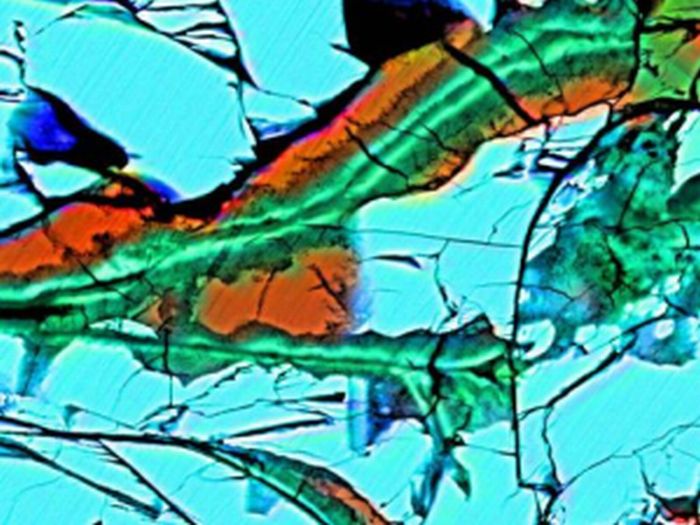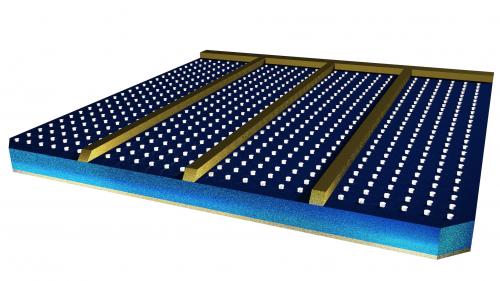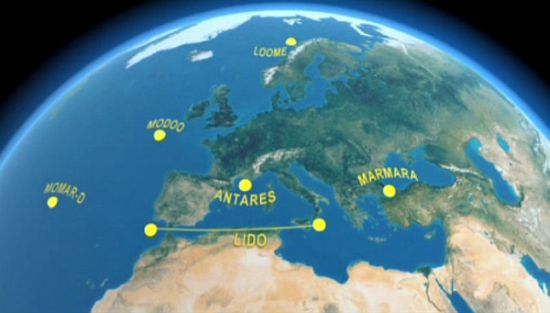Planets scientists’ have discovered carbonation in a meteorite that landed on earth, US to be more specific, in late back 1931. Meteorite study suggests that it must be 3,000 years old and is carried off from the surface of Mars. This asserts that the surface on Mars must be loaded with carbon dioxide, which had happened not more than 3 to 4 billion years ago. Researchers still have no argument which supports the reason for its current absence. However, they have postulated several reasons that might have lead to the…
Read MoreYear: 2013
Technology, An Explosively Dynamic Milieu Of Exponential Time & Innovation
The immeasurable manifestations of science and technology have deeply affected our thought process and the way we live. This scientific knowledge and its technological applications is expediting at a very fast pace. For instance, the tech industry today, is sodden with explosively dynamic milieu of ever-increasing innovation that every next day we witness some milestone or a breakthrough. The Exponential Time Tech paraphernalia morphed into a completely new growth dimension within a gap of few decades only. For instance, radio took 38 years to reach 50 million users, TV took…
Read MoreBringing the Woolly Mammoth Back to Life
Having the Asian Elephant as a close relative, the long extinct woolly mammoth now has hope to come back to life. Scientists are studying the possibility of having hybrid animals give birth to an animal that resembles the woolly mammoth. Although it might sound like a remotely possible science fiction movie, the actual theoretical basis for the work is there. The first step in the process is creating the genetic map of the woolly mammoth (i.e., genome mapping). Reportedly, work in this area has already taken place, as researchers have…
Read MoreGet Brainwashed, Get Some Sleep
A recent study has managed to unlock an important mystery of brain chemistry during sleep. The said study published in Science Magazine found that the brain cleans itself from toxins while a person sleeps. The research team suggested that inability to get rid of toxins may be related to certain brain disorders.
Read MoreMagneto-electric Nanoparticles Now Facilitators Of Drug Delivery
An army of nanoparticles in conjugation with magnetic field would be attacking the cancer cells in a process involving healing ovarian tumor. Researchers at Florida International University (FIU) have come up with an innovative solution of curing ovarian cancer via Magneto-electric Nanoparticles (MENs). The FIU team confirmed that using MENs technique will facilitate Taxol, the chemotherapy drug, to completely wipe off the cells responsible for the growth of tumor that to without affecting the healthy ovarian cells unlike before.
Read MoreGOCE, The Earth Monitoring Satellite De-Orbiting Soon
Gravity Ocean Circulation Explorer (GOCE), an Earth monitoring satellite was propelled to space in March 2009, since then it has been circulating the orbit but very soon, it will run out of fuel and ultimately crash. As maintained by the space researchers, the crash will not result in any risk for humanity. Nearly 50 chunks of mass 250 kgs are estimated to hit the planet earth. Land or ocean, target of the fragments is still not known said the team behind spacecraft. Precision would depend on the proximity of the…
Read MoreAluminum Studs Replacing Flat Solar Panels To Increase Efficiency
Architectural framework for capturing solar energy has been done using layers of materials one over the other. It has been an expensive module to work upon. So in order to reduce the overall cost, the number of layers has been restricted, which lowered its total efficiency level. In order to counter act this problem, researchers came up with a solution according to which, the effectiveness of panels can be increased upto 22% by using aluminum studs on the plane surface of the material that’ll be exposed to the sun light.…
Read MoreAre Black Holes doorways To Other Universes?
Black holes are one of those flabbergasted phenomena of universe that research is still being done on the subject. Gravitational pull is what keep the things moving on earth but with a huge amount of power we can escape the gravity and can move around like in space ships, rockets etc.. However, this is not the case with black holes, density of the object is so high that it funnels down everything that touches it perimeter, light too cannot escape it and is engulfed by the unplumbed phenomenon.
Read MoreGenetic Engineering to Fight Loss of Animal Species
As increasingly more species in the animal kingdom are haunted by the ghost of extinction, scientists are researching on some pretty drastic interventions to reserve threatened life. After its successful use on plants, facilitated adaptation through genetic engineering is considered as a practical option for now. In a recent article of mine, A Spotlight on Evolution, I shed light on environmental changes causing Bonbos to move and get redistributed into new places due to anthropogenic environmental changes, which significantly affected their behavior. New research is now focusing on moving genes…
Read MoreRobo Raven, Bird That Relies On Solar Energy
After the humanoid robots, we would now we witnessing the robotic bird. This robo raven is very much similar to the real birds in the sense that it can control its wing motion due to which it is able to perform similar aerobatics like back flips and dives. Phenomena that was not possible with the mechanical birds before. Precision of the machine is so accurate that birds in the area could be seen diving and attacking from above with their talons. Other birds including seagulls could be seen lining up…
Read MoreInternet Goes Underwater: Deep Sea Wireless Concept
Tentacles of internet are now advancing towards the ocean bed, a realm that is untouched by open wireless. Researchers from the University at Buffalo are working on the concept of deep-sea internet. I am saying working as they are still laboring on its feasibility. The team envision that the underwater wireless network would give control in detecting the tsunami, natural gas exploration, surveillance, keeping a check on pollution and similar other disturbances.
Read MoreRobots In Manned Cosmonautics Envision Scientists
Propelling robots in manned cosmonautics is one of the visions, which the scientists are working upon. After NASA’s R2, Russia is busy designing their Robonaut, the SAR-400. Within the next few years, we would be witnessing SAR-400 stepping into the ISS. Like R2, aim of SAR-400 too would be to solve repair and maintenance issues on the ISS. Talking about the physical structures, both the bots are in form of a robotic torso with no legs of course making it easier to fix to a crane on the ISS.
Read MoreDiamonds Could Be Floating Around Inside Of Saturn
As per the recent planetary analysis scientists discovered that deep atmospheres of Jupiter and Saturn might hold large pieces of diamond floating in a mixture of hydrogen/helium fluid. In order to understand the carbon allotropy with respect to diamond across temperature and pressure, the scientists behind the study plotted a phase diagram. This diagram was then combined with the new pressure-temperature statistics of Jupiter and Saturn. The grid indicated that diamond will be in a stable phase in deep interiors but below the region where the stability will not work,…
Read MoreDesign Is An Art, Says Shawn Moghadam: An Interview
Shawn Moghadam is an Industrial / Vehicle / 3D Designer from Greater Los Angeles Area, CA. He has served Peugeot/Citroen (PSA), Audi, BMW, GM, Subaru, and Volvo trucks. His designs clearly show his in-depth understanding of customer requirements, which happens to be his asset in creating life in his concepts. When he is not designing, Moghadam is busy teaching design student the basics of 2D to 3D translation, how to make 3D models and generate photo-real images from them. Lately, we’ve got the honor of interviewing the much talented designer,…
Read MoreA Tooth Restores Eyesight in British Man
Ian Tibbetts, a 43-year old man, made the right decision when he decided to go through an absolutely revolutionary surgery in the United Kingdome to get his sight back. The medical procedure included growing part of Tibbetts’ tooth and jaw bone into his eye. Tibbetts lost his eyesight in an industrial accident, where scrap metal reportedly ripped his cornea in six places. And after all options had failed, this procedure called osteo-odonto-keratoprothesis (OOKP) was suggested to the Tibbetts, who agreed to having it performed. The surgery was conducted by ophthalmic…
Read More














